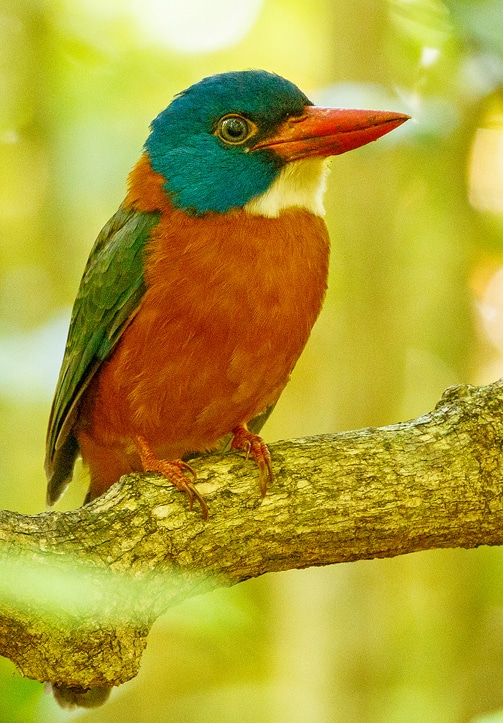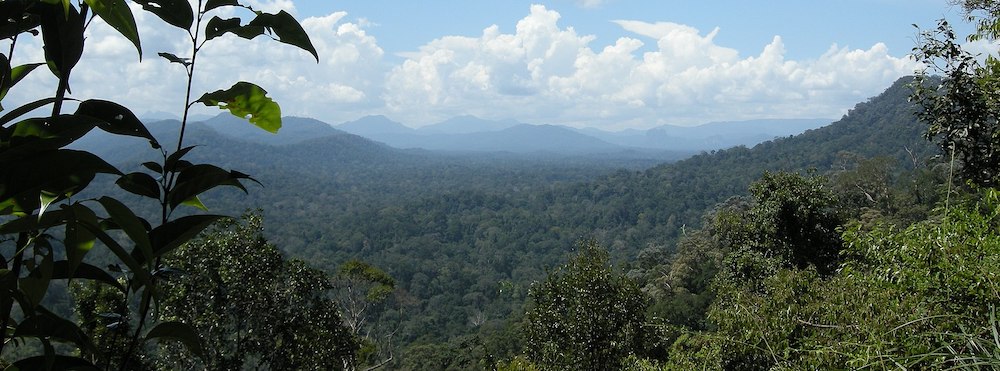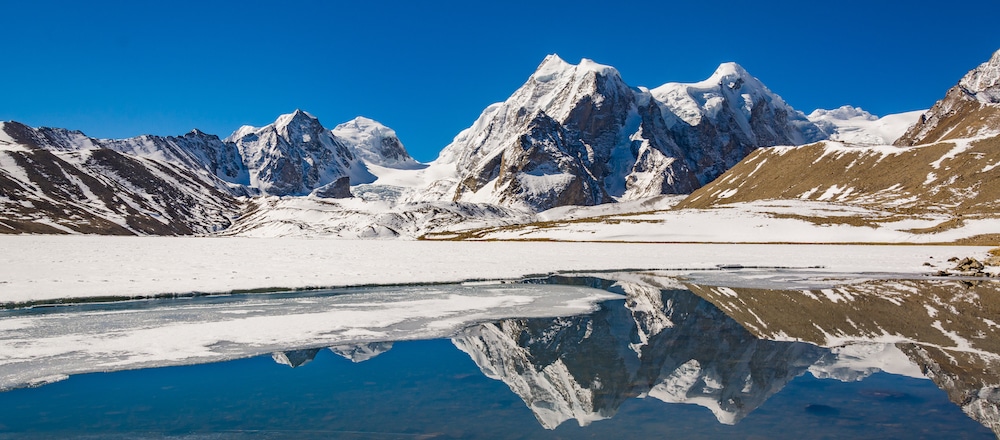Asia

Asia is the largest continent in the world by both land area and population. It covers an area of more than 44 million square kilometres, about 30% of Earth’s total land area and 9% of Earth’s total surface area. The continent, which has long been home to the majority of the human population, was the site of many of the first civilizations. Its 4.8 billion people constitute roughly 60% of the world’s population.
In general terms, it is bounded on the east by the Pacific Ocean, on the south by the Indian Ocean, and on the north by the Arctic Ocean. The border of Asia with Europe is a historical and cultural construct, as there is no clear physical and geographical separation between them. It is somewhat arbitrary and has moved since its first conception in classical antiquity. The division of Eurasia into two continents reflects East-West cultural, linguistic, and ethnic differences, some of which vary on a spectrum rather than with a sharp dividing line. A commonly accepted division places Asia to the east of the Suez Canal separating it from Africa; and to the east of the Turkish Straits, the Ural Mountains and Ural River, and to the south of the Caucasus Mountains and the Caspian and Black seas, separating it from Europe. Geographically, Russia is partly in Asia, but is considered a European nation, both culturally and politically. It is separated from the Americas by the Bering Strait. The Gobi Desert is in Mongolia and the Arabian Desert stretches across much of the Middle East. The Yangtze River in China is the longest river in the continent. The Himalayas between Nepal and China is the tallest mountain range in the world. Tropical rainforests stretch across much of southern Asia and coniferous and deciduous forests lie farther north.
Asia has extremely diverse climate features. Climates range from arctic and subarctic in Siberia to tropical in southern India and Southeast Asia. It is moist across southeast sections, and dry across much of the interior. Some of the largest daily temperature ranges on Earth occur in western sections of Asia. The monsoon circulation dominates across southern and eastern sections, due to the presence of the Himalayas forcing the formation of a thermal low which draws in moisture during the summer. Southwestern sections of the continent are hot. Siberia is one of the coldest places in the Northern Hemisphere, and can act as a source of arctic air masses for North America. The most active place on Earth for tropical cyclone activity lies northeast of the Philippines and south of Japan
Birding Asia
From a birding perspective every part of Asia has something to offer. In the far east country bird lists are long and varied with high endemism in the island nations of Indonesia and The Philippines in particular. Thailand and the rest of Southeast Asia has tropical forest and a great variety of birds. India has huge dense cities and almost pristine National Parks with a birdlife as diverse as the country itself with high elevations, dry states, tropical areas, savannahs and the rest. Despite the size of the population there are a great many wild areas containing big predators and big game animals.

Taman Negara, Malaysia – ©Vyacheslav Argenberg CC BY-SA 4.0 via Wikimedia Commons
Malaysia still has some great birding forests but they are under great threat from loggers, Sri Lanka’s endemics are sometimes hard to find but the search is through beautiful landscapes and India is rich culturally as well as in terms of its birding spectacle. With a large proportion of the world’s bird families and some wonderfully diverse habitat there plenty for birders to hope to see. Over the last few years birding as a hobby has grown in some countries like Malaysia many of whom are also keenly photographing birds. China’s vast country also have more birders and birding tourism is growing with a number of home-grown birding companies to choose from. The vast steppes of Mongolia in the north have their particular special birds as do the jungles of Borneo and the forests of colder northern countries.
Not only are the birds colourful but there are many Asian photographers and artists who have captured these glories and a few images appear on these pages. Asia has very marked differences in attitudes towards the wild world in general and birds in particular. The caged-bird trade devastates local wild populations in, in particular, Indo-China.

Gurudongmar Lake, Sikkim – ©Yoghya CC BY-SA 4.0 via Wikimedia Commons
On the other hand Hindu reverence for ALL wild animals means that birds are still densely packed and widespread in India. China’s massive population and intensive agriculture has impacted on the Avifauna and habitat destruction is rife just about everywhere. Even where there are large national parks and reverence for wildlife, poachers can decimate populations and bring them to the brink of extinction as is happening with Bengal Tigers and less ‘loveable’ species like pangolins… much of it to feed ‘traditional’ medicine practiced in China. Growth of protection societies has been slow but does make a difference, especially where the green tourist dollar supports local economies. Forests making way for monoculture palm plantations, the adoption of western agricultural techniques and even the over use of antibiotics and anti-inflammatories on animals can almost wipe out whole species before anyone even notices their impact.

-
Number of bird species: 3845
(As at April 2024) - This is a little under 40% of the world total.
-
Avibase
PDF ChecklistsI am pleased to offer these checklists as a service to birdwatchers. If you find any error, please do not hesitate to report them.
-
A Photographic Guide to the Birds of Southeast Asia
| (Including the Philippines and Borneo) | By Morton Strange | Periplus Editions | 2014 | paperback | 398 pages, col photos, maps | ISBN: 9780804844512 Buy this book from NHBS.com -
Birds Of South-East Asia
| By Craig Robson | Christopher Helm | Edition 2 | 2014 | Paperback | 544 pages, 120 plates with 3600+ colour illustrations; 3 b/w illustrations, 1 colour & 1 b/w map | ISBN: 9781472970404 Buy this book from NHBS.com -
Birds of Central Asia: Kazakhstan, Turkmenistan, Uzbekistan, Kyrgyzstan, Tajikistan, Afghanistan
| by Raffael Ayé, Manuel Schweizer & Tobias Roth | Christopher Helm | Oct 2012 | Paperback | 336 pages, 141 plates with colour illustrations; 14 colour photos, 5 b/w illustrations, 3 colour maps, colour distribution maps | ISBN: 9780713670387 Buy this book from NHBS.com -
Birds of East Asia
| By Mark Brazil | Christopher Helm | 2009 | Paperback | 528 pages, 234 colour plates, colour distribution maps, b/w illustrations | ISBN: 9780713670400 Buy this book from NHBS.com -
Birds of South Asia. The Ripley Guide
| By Pamela C Rasmussen & John C Anderton | Lynx Edicions | Edition 2 | 2012 | Paperback | 2 Volume Set | 1067 pages, 180 colour plates, 1450 colour distribution maps | Out of Print | ISBN: 9788496553859 Buy this book from NHBS.com -
Birds of South-East Asia: Concise Edition
| By Craig Robson | Bloomsbury Publishing | 2015 | Paperback | 304 pages, 142 plates with colour illustrations; 3 b/w line drawings | ISBN: 9781472924230 Buy this book from NHBS.com -
Birds of the Indian Ocean Islands
| (Madagascar, Mauritius, Réunion, Rodrigues, Seychelles and the Comoros) | By Ian Sinclair & Olivier Langrand | New Holland Publishers | 2013 | Edition: 2 | | Paperback | 264 pages, 71 plates with 1160 colour illustrations; colour distribution maps | Out of Print | ISBN: 9781431700851 Buy this book from NHBS.com -
Collins Field Guide to the Birds of South-East Asia
| By Norman Arlott | William Collins (Harper Collins imprint) | 2017 | Hardback | 432 pages, 178 plates with colour illustrations; colour distribution maps | ISBN: 9780007429547 Buy this book from NHBS.com -
Important Bird Areas in Asia
| (Key Sites for Conservation| By S Chan, MJ Crosby, MZ Islam & AW Tordoff | BirdLife International | 2004 | Paperback | 297 pages, Col photos, tabs, maps, figs | ISBN: 9780946888542 Buy this book from NHBS.com -
The 125 Best Bird Watching Sites in Southeast Asia
| By Yong Ding Li & Low Bing Wen | John Beaufoy Publishing | 2018 | Paperback | 404 Pages | 1,000 photographs + 125 location maps | ISBN: 9781912081523 Buy this book from NHBS.com -
Threatened Birds of Asia (2 Volume Set)
| The BirdLife International Red Data Book - Edited by NJ Collar, AV Andreev, S Chan, MJ Crosby, S Subramanya and JA Tobias Series: THREATENED BIRDS OF ASIA 3038 pages, line illus, distribution maps (2 Volume Set). BirdLife International Distributed by NHBS | Out of Print | ISBN: 9780946888443 Buy this book from NHBS.com
-
BirdLife Asia
WebsiteThe BirdLife Asia Partnership currently consists of 13 national grassroots conservation NGOs, plus BirdLife in Indochina, which is active in a further three countries. In China, the BirdLife Asia Partnership promotes the formation of bird clubs in many cities and provinces, and also works with government, schools and communities. -
Oriental Bird Club
WebsiteOver 300 Oriental bird species are considered by BirdLife International as threatened by forest destruction, wetland drainage, hunting and trade. Conservation of these species is often hampered by a lack of knowledge. Oriental Bird Club supports conservation work in the Oriental region by encouraging studies of birds and their habitats. -
Sanctuary Asia
WebsiteSanctuary Asia, India's leading wildlife, conservation and environment magazine, was started by editor Bittu Sahgal in 1981 to raise awareness among Indians of their disappearing natural heritage.
-
Bird Tour Asia
Tour OperatorBirdtour Asia are specialists in Asian birding tours, offering organised and tailor-made travel throughout the region. Our tours are planned to optimise the birding opportunities at each site visited concentrating on the most enigmatic, localized and hard to find species. By allowing time for comprehensive coverage we will give ourselves the best realistic chance of locating these speciality birds of the region. We aim to offer the best possible bird-tour experience through a combination of small group sizes, experienced and knowledgeable leaders, a friendly and relaxed atmosphere and of course some of the finest birding in the world… -
Bird-Photo-Tours ASIA
Tour OperatorBird-Photo-Tours ASIA is the specialists in bird photography tours in Asia with a portfolio of 50 bird photography tours across 26 countries. -
Birdtours 2 Asia
Tour OperatorWe offer quality guided birding tours but at the same time provide the independent traveller with real value information. To form this perfect venture has only been possible thanks to the knowledge of the region by our dedicated team. We hope to see you soon and in the mean time enjoy the information or dream about your upcoming birding tour! -
KingBird Tours
Tour OperatorSince 1980 KingBird Tours has been the premier company specializing in Asian birding tours. Renowned ornithologist, Ben King, author of, A Field Guide to the Birds of South-East Asia, Collins,(1975); designs all tours to offer comprehensive coverage of the areas visited. Small groups and expert leadership insure seeing as many birds as possible, especially endemics, in each Asian destination.
-
2013 [09 September] - Birding Ecotours
PDF ReportThis seven-week tour took us to some of Southeast Asia’s most amazing birding spots, where we racked up some mega targets, saw some amazing scenery, ate some lovely cuisine, and generally had a great time birding. Among some of the fantastic birds we saw were 11 species of pitta, including the endemic Ivory-breasted and Blue-banded Pittas, 27 species of night birds, including the incomparable Satanic Nightjar, Blyth’s, Sunda and Large Frogmouths, and Moluccan Owlet-Nightjar, 14 species of cuckooshrikes, 15 species of kingfishers, and some magical gallinaceous birds like Mountain Peacock- Pheasant, Crested Fireback, and the booming chorus of Argus Pheasant. 13 species of Hornbills were seen, including great looks at Helmeted, White-crowned, Plain-pouched, and Sulawesi. Overall we saw 134 endemic species.
-
Sibagu - Bird Names in Oriental Languages
Website"Sibagu" is the Classical Mongolian word for "bird". The site is devoted to bird names in different languages of Asia



